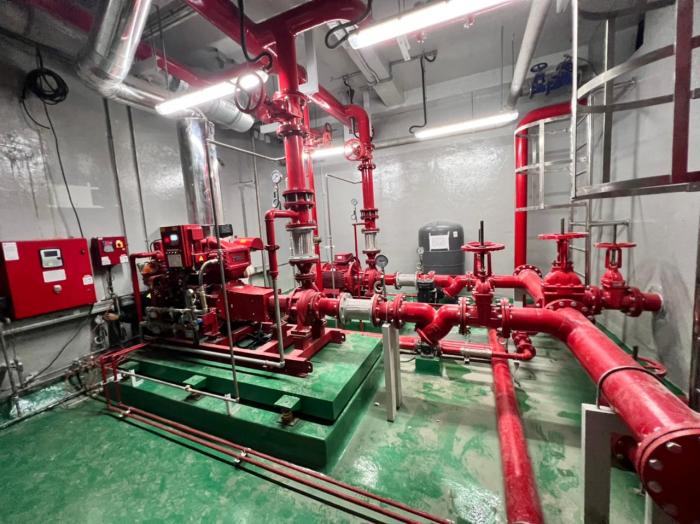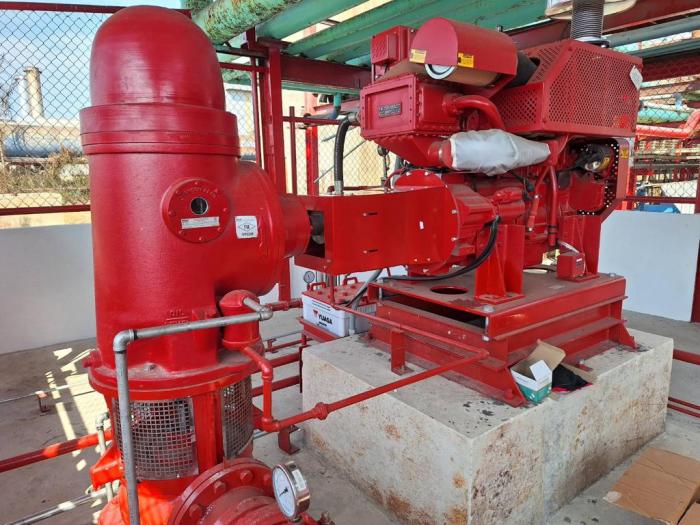KFP4RTA-NLH16
The Kirloskar "KFP4RTA-NLH16" is a fire engine equipped with heat exchanger cooling method, delivering great performance to your pump set.

Features
Full Specification
Power
Speed
No. of cylinders
Layout
Stroke
Displacement
Bore
Model series

Why are Fire Engines different in comparison to indusrial engines?
A fire engine by definition is an engine that drives a fire pump in order to transfer energy to its shaft, in accordance to that, rotating the impeller which transfers the energy to water.
A fire engine is different than industrial engines due to different characteristics of environment and usage it will go through. An industrial engine may operate on a more daily basis in a controlled environment, whereas a fire engine is expected to run only once a week for no more than a couple of hours. Yet, a fire engine is expected to give maximum performance when it is demanded. This leads to different characteristics, preservation methods, and others being developed to fire engines.
Fire engines may also comply to national standards such as SNI and international standards such as NFPA, UL (Underwriters' Laboratories), and FM (Factory Mutual). Said standards ensure an engine operates at its maximum performance, minimizing failure and defects if not attended to.

Q. Are engines universal to all types of pumps?
A fire engine is applicable to all types of pumps, such as centrifugal end suctions, horizontal split cases, vertical split cases, MSMO pumps, vertical turbines, etc. What differentiates one set of pump with another type of pump is the method of coupling.
The only type of pump which requires a special gearbox to operate is a vertical turbine pump set, in which the pump shaft is perpendicular to the engine shaft, instead of parallel. This leads to the requirement of a gearbox that translates the Y-Z plane of rotation of engine to X-Y axis of rotation. Meanwhile, any other type of pump only requires variants of shaft coupling.
